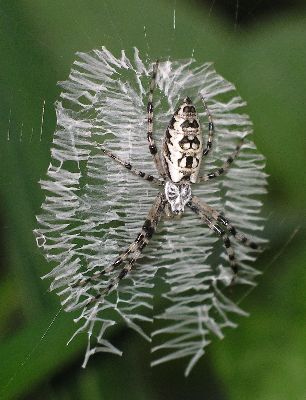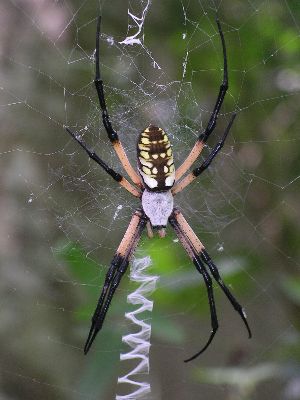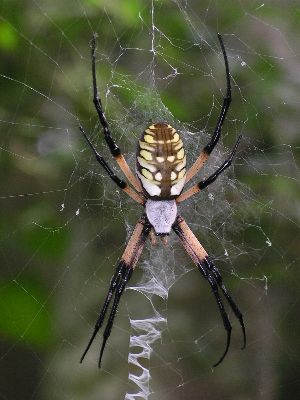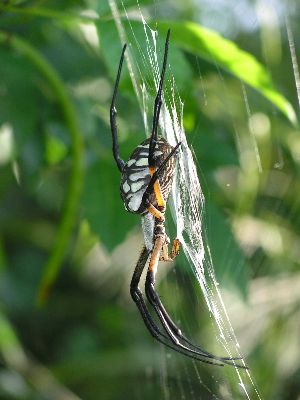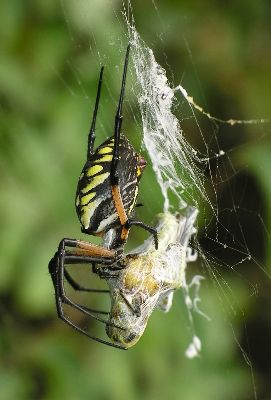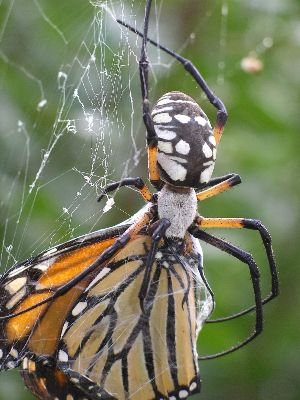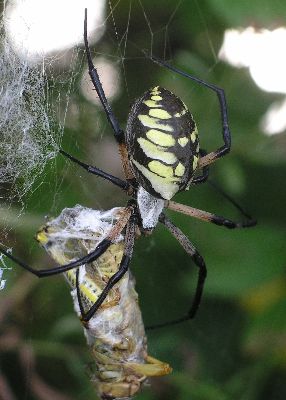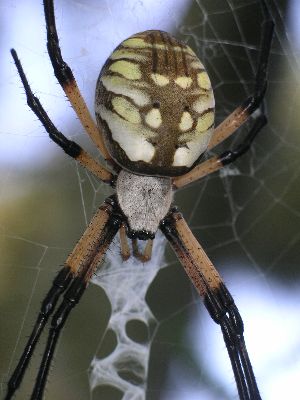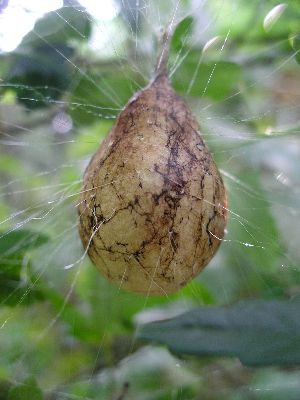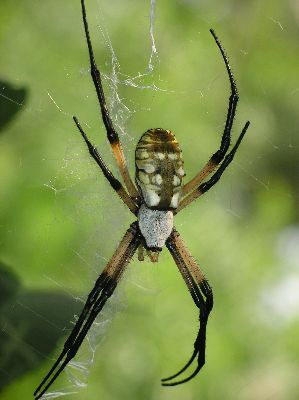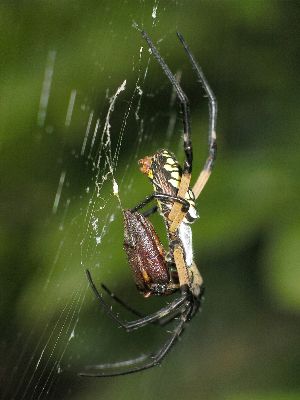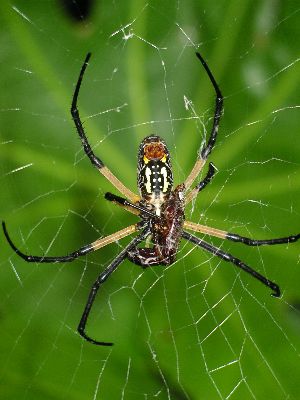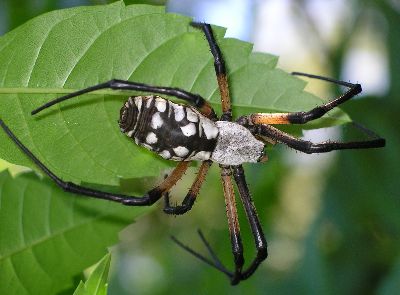The images presented in these galleries are reductions of photos taken by Valerie with a Pentax Optio 450 digital camera. The compression has been increased to 80% (100%=no compression) and the dimensions reduced in order to save bandwidth and facilitate page loading. The information below each image gives the size in pixels and kilobytes of the original file as well as the title by which to request the larger version. All of the original files are in jpeg format, most at about 95% compression, and are suitable for printing, desktop wallpaper, or detailed study. While the images here are free for the taking (right click - save as; do not link to these images directly), the larger versions are also available by sending a request to Valerie via . The frames around the gallery photos are not part of the same file and are only for presentation on this site.
Although the photos are free to use, they are copyrighted by LARVALBUG and remain the property of the owners of this site. We request that any public use of these images be accompanied by a credit to LARVALBUG.COM and, when appropriate, a link to our site (<a href="http://www.larvalbug.com/">LARVALBUG</a>). Commercial use of the large files can be arranged for a modest fee.
To request larger files or ask any questions please send an e-mail to Valerie at .
|
|
Black and Yellow Argiope (Argiope aurantia). Our largest orb weaver here in Austin, this spider is found throughout much of the United States. It goes by other common names like black and yellow garden spider, zipper spider, and writing spider. An article on this argiope in larvalbug's garden provides more information and additional pictures of this species.
Young female Black and Yellow Argiope. This particular individual lived in our yard during the summer of 2004. The extra thick silk that is zig-zagged around the center of the web is called a stabilimentum. Only young spiders make a large one like this. Adults make a single vertical zig-zag.
Male Black and Yellow Argiope. While the females stay in the same vicinity all summer, the males wander around until they find an almost adult female. They then set up a small web on the side of her large one and wait for her to molt into adulthood, at which time they can mate. The male is very tiny compared to the female. This individual was photographed at Zilker Gardens in Austin, Texas.
Female Black and Yellow Argiope. This is the same spider as that in the first photo. She had just reached maturity. The stabilimentum is visible below the spider's head. There has been much speculation as to the purpose of this structure, but many researchers now think that it attracts insects in the same way as flowers because it reflects ultraviolet light very well.
Same spider as above, about a week later. Her abdomen noticeably swollen with eggs, the spider's main goal is to eat and let her eggs develop. Black and yellow argiopes tend to remain motionless for long periods of time, rarely even making repairs to their webs unless absolutely necessary. Although they usually choose sheltered sites, they are often eaten by birds.
In this side view, one of the spider's pedipalps can be seen delicately holding onto the web. Orb weavers have poor eyesight and rely on their sense of touch to determine when prey has entered the web. Besides using the pedipalps, they also strategically place their legs on the silk strands.
Argiope with grasshopper. Few spiders are big and strong enough to tackle such large prey, but this species seems to specialize in such insects. This individual was photographed in the Dallas area.
An even more amazing feat than capturing a grasshopper is that of subduing a sphinx moth, or hawk moth. These moths are very strong flyers and are also covered with slippery scales that come loose on contact. This spider caught its prey at night and I found it in the early morning. There was barely any silk used in wrapping the insect, so the spider must have been fairly quick about dispatching it with venom.
The prey insect held by this spider is completely covered with silk, although it is obviously not all that large. I suspect it put up quite a struggle, and the web suffered extensive damage.
This very resourceful spider was found at Zilker Gardens one fall. It had its web set up right next to a large patch of butterfly weed and had been catching monarchs nonstop. There were two carcasses discarded below the web, the spider was feeding on one, and a still living butterfly was wrapped in silk at the side of the web.
Another view of the same spider. Although butterflies are not particularly strong flyers, they still present a challenge because of the large wings covered with scales. The web of this spider had sustained substantial damage, but she was so busy eating one butterfly after another that she had not had the time to do repairs.
This spider is almost ready to lay her eggs, as evidenced by the very swollen abdomen. If the weather and food supply hold out, and no predators eat her, she could very well lay eggs, continue to feed, and produce another egg sac or two before the end of the season.
Back to our resident spider of 2004. This photo was taken 11 days after "argio04" and shows her ready to lay eggs, which she did that night.
Black and Yellow Argiope Egg Case. This was the egg sac that our spider produced. It was about two feet away from her web, which she had abandoned. The eggs within the sac are vulnerable to a variety of predators including parasitic spiders and wasps. If they are unmolested, though, the young will hatch and remain in the sac all winter, dispersing the next spring. Out of the hundreds of eggs in a sac, only one or two spiders might make it to adulthood.
Our spider the day after laying her eggs. She had made a new web in a slightly different location, a couple of feet away from her old site.
In this closer view of the above spider, the wrinkled skin is very evident. If she had evaded predators, she probably would have continued to feed and produced at least one more egg sac. We've had spiders in the past lay as many as three. The following day, though, the web was torn and empty; the spider was gone.
This female argiope, which had probably laid at least one egg case (note the very small and wrinkled abdomen), was more fortunate than the spider we watched through 2004. She is feeding on a large beetle.
A ventral view of the same spider. The spinnerets are obvious in this photo. The plant in the background is a Japanese aralia.
Another female black and yellow argiope that has recently laid eggs. After the effort of producing the eggs and also creating the elaborate case for them, the spiders often look totally worn out. Even if they recover and produce more eggs, they still will not live through the winter.
|
